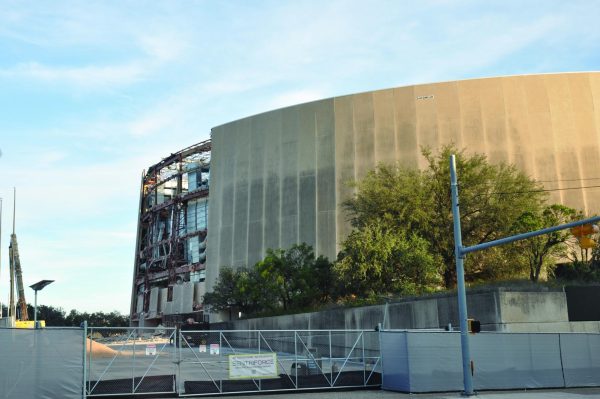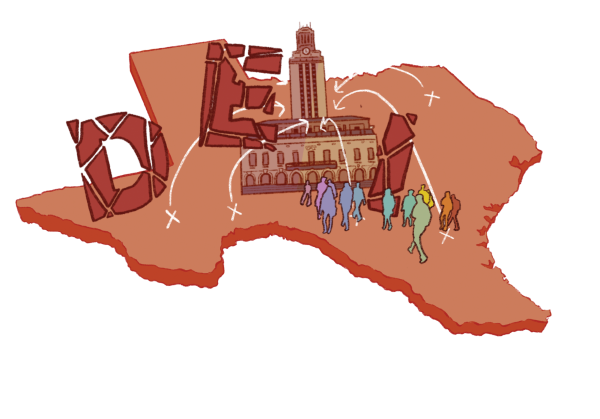Working for Nourished Communities with Food Justice
January 21, 2021
According to non-profit organization Feeding Texas, approximately one in seven Texans are food insecure. In central Texas alone, 17% of residents are food insecure, according to the Central Texas Food Bank. This means they cannot reliably access enough nutritious food to feed themselves and their families.
There are many organizations around Austin that help with food insecurity, including the Sustainable Food Center (SFC), Austin Community Gardens, Urban Roots, Black Food For Thought and Meals on Wheels. Jennifer Steverson, who works at Austin Community Gardens, described the concept of food justice as the consideration of the effects of racial and economic inequality on a person’s ability to nourish themselves or provide food for others.
“Food justice is a structural perspective of the food system that acknowledges the impact of race and class on food access and food production,” Steverson said. “Food justice advocates work to improve equity and food sovereignty. Food justice work is diverse. Some examples include the Coalition of Immokalee Workers, farm workers who organized to demand fair wages and safety measures. The ongoing work of the United Farm Workers is also part of food justice…Seeds and seed diversity are another aspect of food justice for gardeners and farmers.”
Urban Roots is an Austin-based nonprofit that teaches young people about farming and food. According to Program Manager Teresa Orduno, the issue of food insecurity is widespread.
“About 16% of people in Austin are food insecure,” Orduno said. “And many barriers go into play: low proximity to food retail, low household income, people not having access to transportation and less affordable healthy food availability. There are 13 zip codes in Travis County that do not have a full-service grocery store.”
According to Stevenson the COVID-19 pandemic hasn’t helped these numbers. She said many people across Austin have lost their jobs, making it harder for them to pay for nutritious food.
“The COVID-19 pandemic has been a challenging time for many people in our region,” Steverson said. “The Office of [Federal] Sustainability established a weekly food access call at the beginning of the pandemic to help different emergency food providers communicate with each other and provide food to more people.”
The main demographics targeted by this issue are low-income communities and communities of color. Hilda Gutiérrez, the People and Operations Director at the SFC, said food justice is important to the health of a community.
“I think that if we are going to have a thriving community, we need to, especially for people of color and low-income communities, center those individuals,” Guitiérrez said. “I think what we’re seeing right now is food apartheid: certain folks get access to good food and get to live long and healthy and successful lives, and those folks look a certain way, they have certain incomes, et cetera.”
Community gardens are one of the main ways that people can grow their own food, according to Steverson. Community gardens also support food sovereignty, the idea that the people who grow and consume food should be able to control their food system.
“Community gardeners are also able to grow culturally important foods that may be hard to find or expensive in grocery stores,” Steverson said. “For example, at the Festival Beach Community Garden, there are gardeners from Myanmar who grow hibiscus plants and harvest the leaves for use as an herb. It is easy to find hibiscus flowers, also known as sorrel and jamaica, in Austin grocery stores, but it’s harder to find the leaves…[Food justice] is important because food, like water or shelter, is a necessity that people shouldn’t have to be without because of economic status, race, et cetera.”
People who are able to can also garden in their homes. Gutiérrez said she’s seen some people grow their own food to share with their neighbors.
“Maybe they grow gardens in their homes, but they built them in the front of their home, so that their neighbors can go and take the harvest,” Gutiérrez said. “So that’s also really awesome, because then, people can just pick from your trees because whenever you grow food, you have so much, you have like pounds and pounds of things that you don’t even need.”
Getting the food is only one step of the process. After that, people need to know how to cook it. The SFC teaches cooking classes, and Gutiérrez said people can help out by giving neighbors or friends healthy recipes.
“I think that is a thing that a lot of people don’t know how to do,” Gutiérrez said. “Helping people around you that are like, ‘Hey, how did you make that recipe?,’ Those are small things that make a big difference in people’s lives. It really transforms their way of thinking of how they can prepare food because a lot of people are like, ‘Oh, I just fried or microwaved it.’ That’s not healthy, but it’s really hard to understand what the skills are to make food.”
There are many ways that people can help those who are food insecure. One way is to reduce food waste, though, according to Orduno, there are many other ways.
“[You can] volunteer at organizations that are promoting healthy, affordable access to food, donate to organizations like Urban Roots, Serafina, Meals on Wheels, et cetera so their work can continue or get involved in what’s happening in your community and find out where you can donate food,” Orduno said.
Gutiérrez said that even sharing where food comes from helps, along with pushing state policymakers to support policies that help local farms and farmers. These policies would support the farmers and help keep money within the community instead of large companies.
“If we had more people sharing where our food comes from, putting more pressure on legislators to provide subsidies or support for local farmers to grow food that our people can consume,” Gutiérrez said, “I think that we’d have an entirely different community.”









